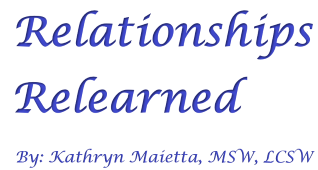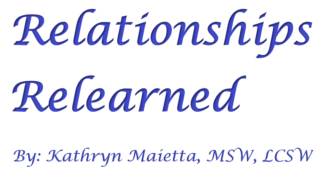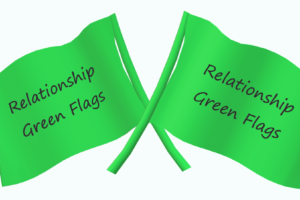Listen to Hear
Comments from Kathryn, the author of this blog and a licensed clinical social worker: In my private practice I would frequently hear clients talk about communication problems. What was difficult for them to understand was that for communication to occur, there must be a sender (the person speaking) and a receiver (the person who hears the person speaking). And that it is was always the sender’s responsibility to make sure communication occurs.
This does not mean the receiver has no responsibility in communication! No, the receiver is responsible for listening to hear, for being an active listener. When the receiver practices active listening, they are focusing on what the other person is saying instead of planning what to say in response. Active listening helps you have more meaningful conversations and resolve conflict by:
- boosting collaboration
- building trust
- increasing understanding
Four Types of Active Listening
These are the four major types of listening:
- Appreciative listening is when you listen to someone else for pure enjoyment. Examples include the following: listening to music, listening to a motivational speaker, listening to a stand-up comedian, or attending a religious ceremony. With appreciative listening, you are not a participant in a conversation.
Your goal as an appreciative listener is to just enjoy what you are hearing.
- Empathetic listening is when you listen to understand what someone is saying. Examples include the following: trying to put yourself in the speaker’s shoes, listening to someone’s personal story. With empathetic listening the focus is on the other person, not you.
Your goal as an empathic listener is to really hear and understand what is being said.
- Comprehensive listening is when you listen to learn something new. Examples include the following: listening to a podcast, watching/listening to the news or listening in a classroom. To actively participate in comprehensive listening, you must concentrate on what is being said.
Your goal as a comprehensive listener is to receive new information.
- Critical listening is when you listen to form an opinion of what someone else says. Examples include the following: a debate with someone or listening to a sales person. Critical listening is used to evaluate the content of what is being said. You are listening to all parts of the message, analyzing it, and evaluating what you heard.
Your goal as a critical listener is to evaluate the message that is being sent and decide for yourself if the information is valid.
Words, Body Language and Tone of Voice
When a conversation is occurring, senders not only use their words, but they also use body language and tone of voice to convey their message.
While the words that are spoken or the body language that is used by the sender is important, the receiver or listener will always be most responsive to the tone of voice of the sender. For example, if a car salesman is telling the listener that a car is in great condition, the salesperson will probably be working very hard to make sure his or her tone of voice, body language and words all match. Sarcasm or looking anywhere except the face of the listener or prospective car buyer will probably lead to a loss of sale.
A teacher or a clergy person who is trying to impart knowledge or important information will be working to make sure their tone of voice, body language and words all match. If they don’t, the listener will not believe the sender.
While senders will be working on making sure their words, tone of voice and body language all match, listeners also have a responsibility to demonstrate they are listening. While this may not happen in words or tone of voice (that would be called interrupting!), the listeners’ body language will speak volumes.
Your body language, including your facial expressions, plays a significant role in demonstrating you are actively listening. Maintaining an open posture and nonverbal cues like nodding and smiling are important to assure the sender that you are present and interested in the conversation.
To demonstrate active listening, give the sender (or person speaking) your full attention. Minimize distractions, maintain eye contact, and focus on the speaker’s words, tone of voice, and nonverbal cues. Being fully present demonstrates that you value the person’s feelings and their point of view.
Ask Open-Ended Questions
When it is the listener’s time to speak and demonstrate they have been listening, asking open-ended questions will encourage speakers to clarify their thoughts and feelings. It is an opportunity to gain a better understanding of their perspective and explore the topic more deeply.
The goal of asking open-ended questions is to demonstrate you have been listening. There is always an opportunity to ask clarifying questions! Examples of open-ended questions the listener might ask:
- “What can I do to help or support you?”
- “What motivated you to make that choice?”
- “What did you mean when you said that?”
If you were the original sender, how would you perceive those three questions if the former listener had a sincere tone of voice and had used good eye contact?
If you were the original sender, how would you perceive those three questions if the former listener had a sarcastic tone of voice and had been scrolling on their cell phone?
Take Away Point
During communication, the interaction between the sender and the receiver can resemble an elaborate dance. While it is the responsibility of the sender to make sure communication exists, the listener also has an important role to play.
With warmest regards,
Thank you so much for reading this blog. If you enjoyed the content, please check out other blogs at:
https://relationshipsrelearned.com/my-blog/
https://rvingnomads.com/blog/
In addition to blogs and articles, I have written a series of self-help books. To view these books, please go to my Amazon Authors Page or go to the books tab at the top of this page.
To be notified of future posts, please enter your email address and click on the Subscribe button.
| AI has not been used to create any content for my website, articles, blogs or books. All material is original unless otherwise noted. All photos and graphics within my website and blogs were taken or created by David Harrington or Kathryn Maietta. |












